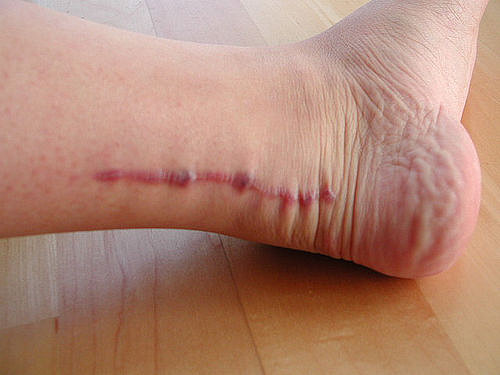“Chocolate is my Achilles’ heel. What’s your weakness?” The phrase “Achilles’ heel” is often used figuratively, but in the literal sense, it also applies to your body. If you’re an avid sports fan, then you’ve probably heard of the recent Achilles tendon injuries to Kobe Bryant and Steve Smith Sr., basketball and football players respectively. An Achilles injury is serious and goes beyond temptations to sweets.
The Achilles tendon is the strongest and longest tendon in your body, and it connects your calf muscles to your heel bone. The Achilles tendon is located at the back of your ankle and above your heel, and it lets you walk, run, and jump. Because the Achilles tendon is commonly used, it can easily get injured. Most Achilles tendon injuries are caused by tendinitis, in which the tendon becomes swollen and painful from overuse and degeneration. In addition, other causes include wearing high heels, having flat feet, or tight muscles. In severe cases, a sudden and large amount of force on the tendon can cause it to tear and you’ll distinctly hear a popping noise.
Image Source: Jan-Otto
An Achilles tear usually occurs while playing sports such as running, gymnastics, and football. For example, a runner who immediately starts sprinting at the beginning of a race is more vulnerable to suffering an Achilles injury because of the abrupt pressure on the tendon. See this link for a picture of an exposed Achilles tendon, warning for gore. Symptoms of an Achilles injury include pain along the back of your foot, tenderness, and difficultly walking.
In most cases, an Achilles injury will heal on its own. To speed up the process, you should use RICE, which is a mnemonic for rest, ice, compression, and elevation. In addition, taking painkillers, such as ibuprofen and naproxen, can help relieve pain and swelling. Performing stretching exercises can help strength the tendon. In more severe cases, surgery to repair the tendon may be required. Thereafter, you’ll need to wear a cast for 6-10 weeks, and after a few months, you can return to normal activity. Ways to prevent an Achilles injury are to avoid steep uphill running, wear shoes that fit well and give good support, increase physical intensity slowly, and be cautious of pain in your calf or heel.
Suffering an Achilles tendon injury isn’t the end of the world. Famous people such as Dwayne Johnson, Al Gore, and Kobe Bryant have all recovered from the injury. The important takeaway is to rehabilitate slowly and fully to give your body sufficient time to recover 100%.
Feature Image Source: scar02 by joolie










